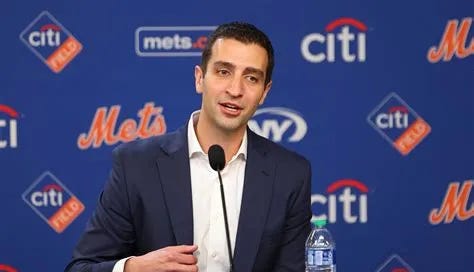“We think we have really talented pitchers,” he said. “And it's the talented pitchers that are in our rotation right now. It's the talented pitchers who are presently on the IL and it's the talented pitchers who may be in the rotation later in the year.
“A lot of what we try to guard against over the course of the season is what you can't predict, right? You can't predict things like injuries. You can't predict things like underperformance. You also can't predict breakouts, and if you lock yourself in with no flexibility, you also don't have the opportunity to take advantage of breakouts.
“The notion of a championship-caliber rotation, I think, is one that is worthy of discussion. I think if we look at the actual champions of baseball over the last however long you want to look at -- decades, 15 years, 20 years, some of them might have the Hall of Famer at the front end of the rotation, and some of them have guys who signed one-year deals and were traded midseason and all of a sudden got on the heater in September and October, and a team rode them to a World Series championship. Teams can be built in a variety of different ways. And I think successful rotations can be built in a variety of different ways.
“The last thing I'll say is like the long-term, successful rotation depends upon our ability to develop really quality starters, right? And that is what we are aiming to do. That is what the continuously successful teams at this level do, and really, that is where our focus is."
snip
“I don't think it needs to be seven innings every night, but you do need some length out of your rotation and or if not, you will go through your bullpen, you'll pay the price at some point later in the year. So I don't discount all the importance of starting pitching. In fact, I think starting pitching is really important.”
Source: Andy Martino, SNY
While this was about the rotation, it’s hard for me not to think about the bullpen, too. The Mets played two, two-run games and a one-run game in their first three outings. And all eight relievers got into a game, with none of them pitching more than once. Carlos Mendoza showed trust in all of his relievers in the opening series, which was nice to see, especially with no starter reaching six innings.
Last year, there was criticism here about Mendoza being too willing to go to his pen. But that changed as the season went along and my guess is that we’ll see a similar pattern this year. But the pen seems much stronger than this time a year ago, which should mean five-inning starts aren’t necessarily a bad thing, especially if they come with zero or one run allowed.
And when June rolls around, hopefully we’ll start seeing those 7-inning starts, too.





At this point, given how well they did last year, I need to give credit to David Stearns for putting together a rotation that hopefully will exceed my concerns and the same for the pen. It is always better in my mind to have an ace at the top of the rotation and perhaps I will feel better once I see how Peterson and Senga perform in their first starts. If Senga had not been injured last year, then I would’ve considered him an ace but it is hard to feel assured since we have no idea which pitcher he will be this year. Getting six or seven innings from pitchers will really separate the teams this year and if Manaea and Montas come back healthy then their overall staff will just that much better.
For 2024, the average innings pitch for a starter was just under 5.1 innings. Stearns is is optimistic when he's says seven innings for starters when he should be setting up his pitching staff for 5.1 innings. Therefore, the bullpen should have two or three accomplished multi-middle inning relievers so that the bullpen doesn't get burn out. Butto, Kranick, Garrett, Brazoban and Blackburn should fills this role and Mendoza should use in that role. Five one inning relievers and three multi-middle inning relievers would be an ideal mix for the bullpen.